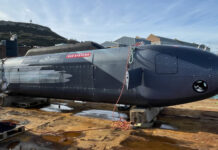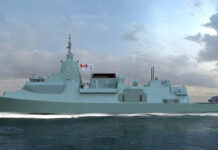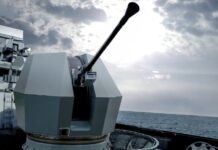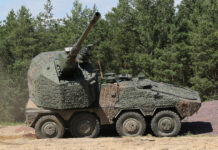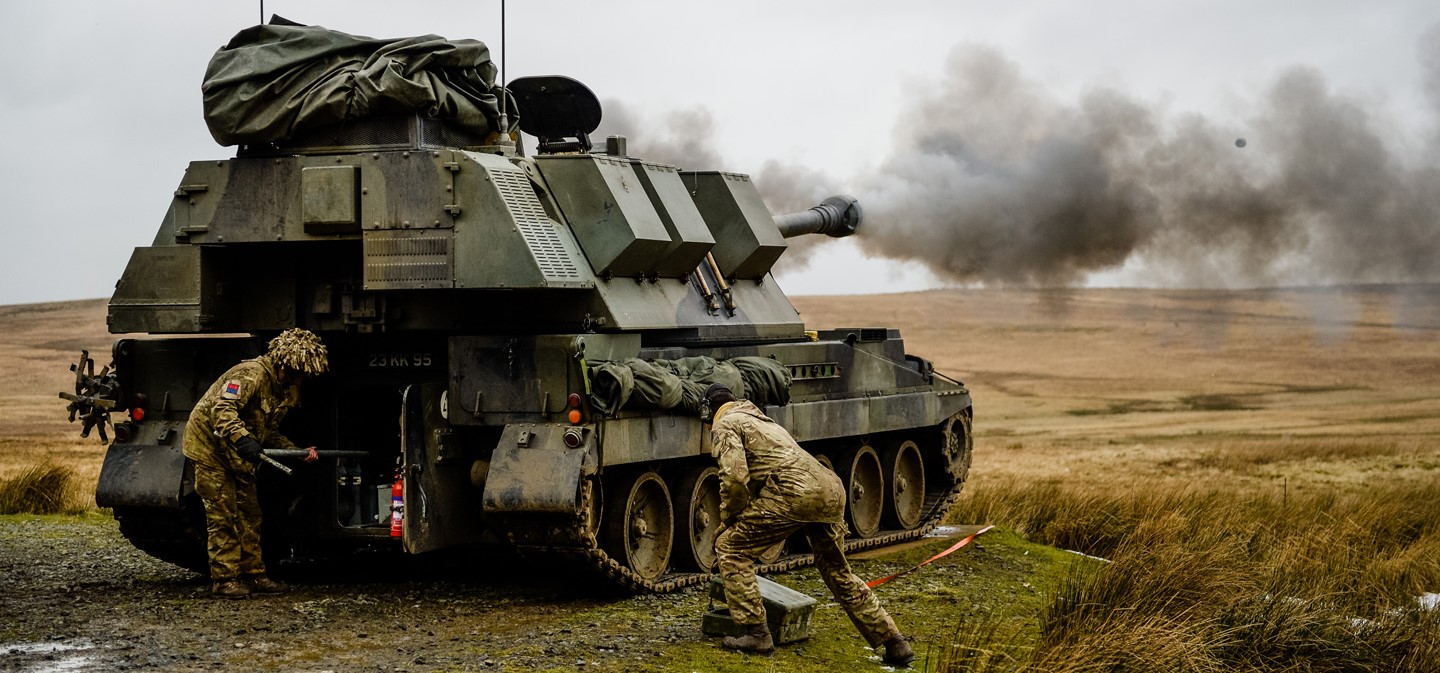
The 155 mm Artillery Marketplace Evolves
David Saw
With the collapse of the Soviet Union and the end of the Cold War, the strategic landscape of Europe was totally changed. Eastern European nations that had been part of the Warsaw Pact or even the Soviet Union now found themselves emerging as democratic states. For the first time in more than 40 years the threat of a major conflict in Europe appeared to have evaporated. In those circumstances where was the logic in sustaining the large military establishments that had been considered necessary in the Cold War?
As far as strategic analysis went, the belief was the role of the military in the 1990s and beyond, would be focussed on peacekeeping operations and missions such as disaster relief. Nobody was expecting world peace to suddenly emerge and conflict to disappear from the world stage. What they did expect was that the time of high intensity mechanised conflict was over. In those circumstances European land forces, which had spent years preparing to fight and being equipped to fight high intensity mechanised conflict, would have to change their focus, structure and equipment strategy to meet the demands of the new European security ecosystem. The consequence of this was a defence capability build-down over much of Europe.
Another aspect of this build-down was the cascading of equipment deemed surplus by one country to another, as we shall see in certain cases, some of this cascaded equipment has gone on to serve with a third country and even a fourth. In the context of 155 mm artillery if the end of the Cold War marked the start of a period of capability decline across much of Europe, recent events have totally transformed the European artillery landscape. Since the Russian invasion of Ukraine in February 2022, efforts to supply Ukraine Ground Forces with artillery systems unearthed a profusion of different systems. Initially these were Soviet calibre systems, but then the majority of systems arriving in Ukraine were NATO 155 mm calibre. Beyond Ukraine, the key artillery trend has been Western nations seeking to boost their own artillery capabilities, resulting in some enormous acquisition programmes. Even so, the artillery picture across Europe remains difficult to fathom.
The British Artillery Crisis
The British Army has a 155 mm artillery problem, it had been hoped that there was finally a path to resolve this situation and on paper there was, unfortunately real life intervened. The roots of the British artillery problem date back to the 1960s, and start with a number of acquisition programmes for self-propelled artillery, with two main systems being introduced into service.
The first of these systems was the FV433 Abbot, based on the chassis of the FV432 APC, this was 16.2 tonne system mounting a 105 mm L13A1 gun. Work on the design started in the late 1950s and some 12 prototypes were built by the early 1960s, the first Abbot vehicles were delivered to the British Army in 1965 by Vickers and eventually 176 systems would be acquired. Vickers also proposed a less complex and expensive export variant of the system known as the Value Engineering Abbot. India acquired 68 of these, while the British Army acquired 20 for use as training vehicles at BATUS in Canada. Also arriving in the mid-1960s were the first of some 140 M109 155 mm self-propelled guns from the US, these would be upgraded to M109A1/A2 standards during their service lives.

With both the Abbot and the M109 destined to reach the end of their service lives in the early 1990s, work started on the design and development of a successor in the 1980s, that eventually led to the arrival of the ‘Artillery System for the 1990s,’ more commonly known as the AS90. In total 179 AS90s were built for the British Army, but unfortunately for the AS90, it arrived after the end of the Cold War, when its capabilities were no longer seen as a priority for the British Army.
With the arrival of the AS90, the story of the Abbot and the M109 came to an end in Britain. However, a large proportion of the British M109 fleet would go on to find a new life elsewhere. In 1994, 83 of these British M109s were sold to Austria, some of these were converted to the M109A5Ö gun configuration, others to a command and control version and others to a driver training vehicle. The M109A5Ö still remains in service in Austria, but in 2017 the Latvian Land Forces were able to acquire 35 M109A5Ö gun systems, 10 command and control variants and two driver training vehicles from Austria. Then in 2021 Latvia acquired a further 18 M109A5Ö gun systems from Austria. That is not the end of the story though, in August 2022 Latvia donated six M109A5Ö guns to Ukraine.
Ironically in 2022, Britain found itself actually purchasing M109 systems, albeit for Ukraine. When Belgium decommissioned its M109 fleet, it had 64 upgraded M109A4BE guns, of these 36 were sold to Indonesia in 2017. The remainder were sold to a private contractor and Britain purchased the remaining 28 M109A4BE for refurbishment and onward supply to Ukraine. Other M109 donations to Ukraine include 23 M109A3GN from Norway, supplied in May and November 2022, and more than 20 M109L from Italy arriving from October 2022. More recently, the US has said that it will be supplying Ukraine with 18 M109A6 Paladin guns and 30 M992 Field Artillery Ammunition Support Vehicles (FAASV) for ammunition supply to gun systems in the field.
The course of the conflict in Ukraine has shown that artillery is absolutely essential for ground operations, this has resulted in a prodigious demand for artillery, both towed and self-propelled. To assist Ukraine, the British government offered to supply 30 AS90 systems, the current British Army AS90 inventory is 89 guns according to the official data contained in ‘UK Armed Forces Equipment and Formations’ released by the Ministry of Defence (MOD). However, while Britain has 89 AS90s on paper, it does not have 89 AS90s which are actually ready for operational use.
Obviously nobody is going to provide an exact number of workable guns, according to British sources there are certainly ten guns that work, the majority of which are deployed to the artillery battery supporting the British Battlegroup in Estonia. It total there are only thought to be 20 AS90 guns that are truly viable at this point. So, where were the British government going to find 30 guns for Ukraine? The short answer was that they could not, the offer of 30 guns then became an offer of 24 guns. Of these, eight AS90 could be supplied, while a further 16 were in a situation where they would gradually be made operationally ready and presumably be supplied to Ukraine at some unspecified point in the future.

Where Next?
This situation with AS90 for Ukraine demonstrated just how dire the artillery situation had become for the British Army! There was an artillery programme on the horizon that was supposed to resolve the artillery problem in the shape of the Mobile Fires Platform (MFP). This was to be the successor to AS90, with AS90 to reach its out of service date in 2030, although there were suggestions that this could have been extended to 2032. This is a classic example of the strange world of British defence procurement, where a critical replacement for an artillery capability that has been diminished to the point of insignificance, has an in service date seven to nine years into the future!
On the positive side, MFP is a funded programme, up to 116 guns were due to be acquired, as well as a range of different ammunition natures, and the contract was expected to be awarded in 2026. It was expected that the MFP programme would officially get underway at the start of this year, possible industrial contenders were many and varied, including BAE Systems with Archer, Elbit with ATMOS, KMW with Remote Controlled Howitzer 155 mm (RCH 155) mounted on the Boxer platform, the Nexter offering the Caesar, and Hanwha along with their British partners in ‘Team Thunder’ offering the K9A2 system.
MFP was gearing up to be a fascinating programme, then all of a sudden everything changed. It appears that those in positions of power noticed that Britain did not have a viable 155 mm tube artillery capability and that something should be done about this. To that end there is now talk of an interim 155/52 mm artillery capability being acquired, with the MFP supposed to happen at some as yet to be decided time in the future. The obvious risk to the programme here is that if the interim gun system is satisfactory, why proceed with MFP?
It seems that the system being suggested for the interim artillery programme is the Archer from Sweden, which presents a rather intriguing scenario. Sweden was somewhat reluctant to supply artillery to Ukraine, then it changed its mind, the next step being deciding on how many Archers to send from the 48 systems in storage and then getting them prepared for operational service in Ukraine. Once the number for Ukraine is determined, that opens up the path for negotiating on the number of systems that the British might want and then defining a timeline when they could be delivered and how much they would cost.
Archer seems to have emerged as the favoured interim artillery solution despite the fact that there appears to have been very little thought given to other possibilities. It is believed that Hanwha proposed a K9A1 solution for the interim artillery requirement and that there was very little response from the British MoD. All of which is somewhat surprising as Hanwha have proven as part of their major contract with Poland that they can rapidly supply equipment.
Under the terms of the contract with Poland, an initial batch of 48 K9PL (K9A1) guns were to be supplied in 2022/23, the first 24 guns were rolled out in October 2022 and subsequently shipped to Poland, arriving in Gdynia on 5 December 2022. The third and last batch of 12 K9PL were ready for shipment from the Republic of Korea (ROK) in January 2023. This is truly rapid delivery, the official Polish government announcement was in July, commercial contracts were inked in August and first deliveries were made in December and it is estimated that deliveries ought to be complete by March. The ability to draw K9s from ROK Army stocks, prepare and deliver them, within such a short timescale is noteworthy.
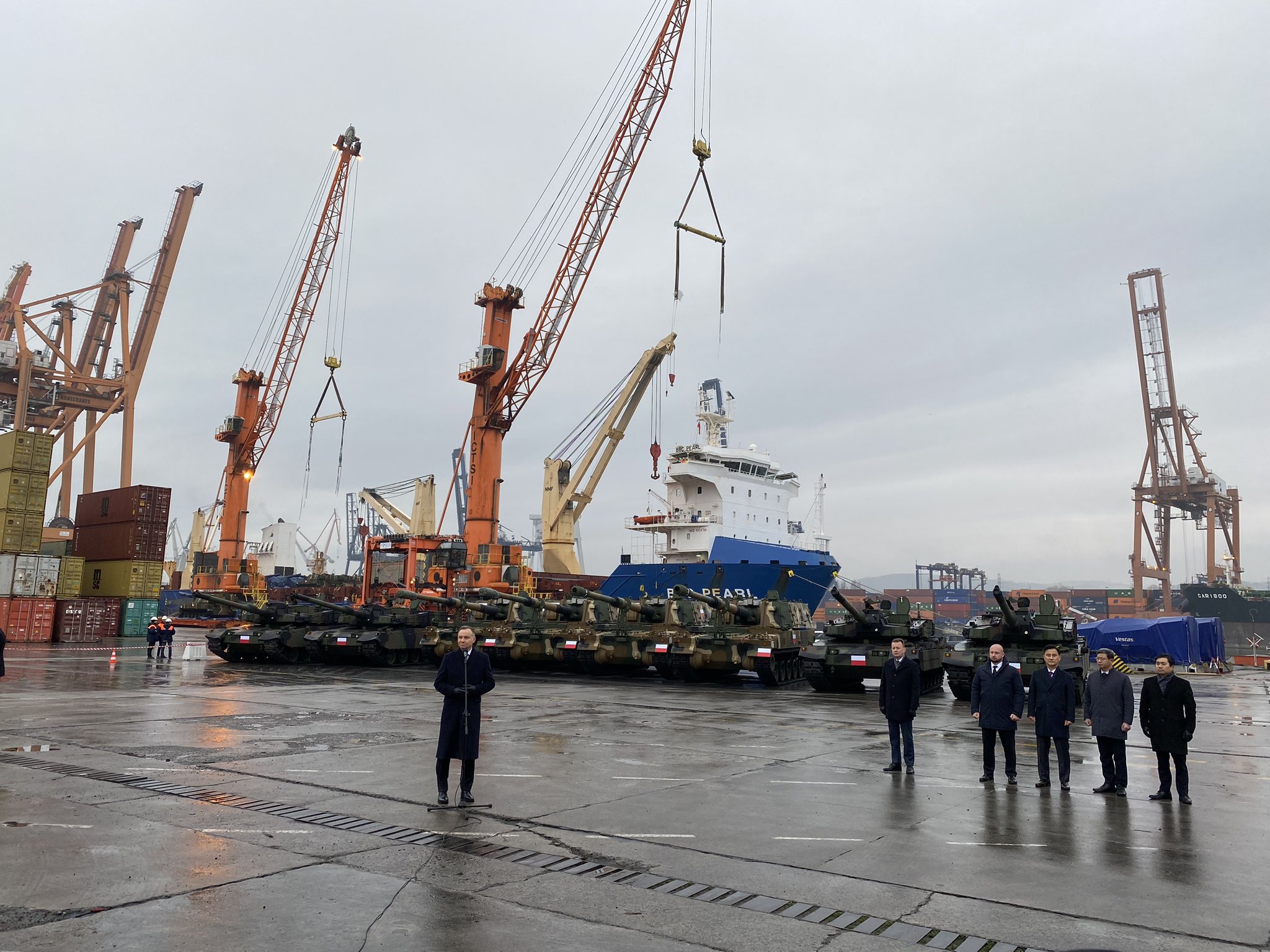
All things considered, it has been a lucrative period for Hanwha and the K9. In December 2021 they signed a contract with Australia for 30 AS9 Huntsman (the Australian configuration of the K9) gun systems and 15 AS10 armoured ammunition resupply vehicles. February 2022 saw the signing of a contract for an undisclosed, but large number of K9 gun systems, K10 ammunition resupply vehicles and K11 fire direction centre vehicles by Egypt. Hanwha will supply the first batch of systems by the second half of 2024, while in parallel a technology transfer programme will see local production of the three vehicle types in Egypt to complete the order.
Elsewhere, the contract with Poland could eventually amount to 672 K9 systems, in November Norway added to its K9 and K10 inventory with an order for four more K9 and eight more K10 systems. While in January 2023, Estonia opted to acquire an additional 12 K9 systems, previously they had ordered 24 K9 systems, with 18 systems delivered by December 2022.
The French Connection
The Nexter Caesar system found itself at the centre of a multinational effort to support the defence of the Ukraine, France supplied an initial batch of 18 Caesar 6×6 MkI systems to Ukraine from May 2022 onwards. As of January 2023, it has agreed to supply an additional 12 Caesar 6×6 MkI systems to Ukraine. Denmark was due to take delivery of 19 Caesar 8×8 systems (mounted on a Tatra T-815 chassis), but has announced that it would be transferring these systems to Ukraine.
In December 2022, Lithuania announced the purchase of 18 Caesar 6×6 MkII systems, thus becoming the second MkII export customer after Belgium, which ordered nine vehicles. The MkII system is based on a new Arquus-designed chassis. The Czech Army, which had 52 Caesar 8×8 systems on order, has now placed an order for 10 additional systems to bring their eventual Caesar inventory to 62 guns. Meanwhile France continues to order Caesar systems, the DGA, the national armament agency, ordered 18 Caesar 6×6 MkI systems to replace those transferred to Ukraine. At the end of 2021, the DGA started work on the Caesar 6×6 MkII programme for the French Army, with the in-service date slated for 2026.
It would be fair to say that 2022 was the year that many in Europe rediscovered the importance of 155 mm artillery and that the conflict in Ukraine was the cause of this rediscovery. Apart from the artillery transfers noted above, we should mention the other 155 mm artillery either delivered or on order for Ukraine. These include: 22 PzH 2000 from Germany and the Netherlands, with Italy adding six more, 18 AHS Krab from Poland with 54 more on order, eight Zuzana 2 from Slovakia with 16 more on order, and finally 18 RCH 155 on order from Germany.
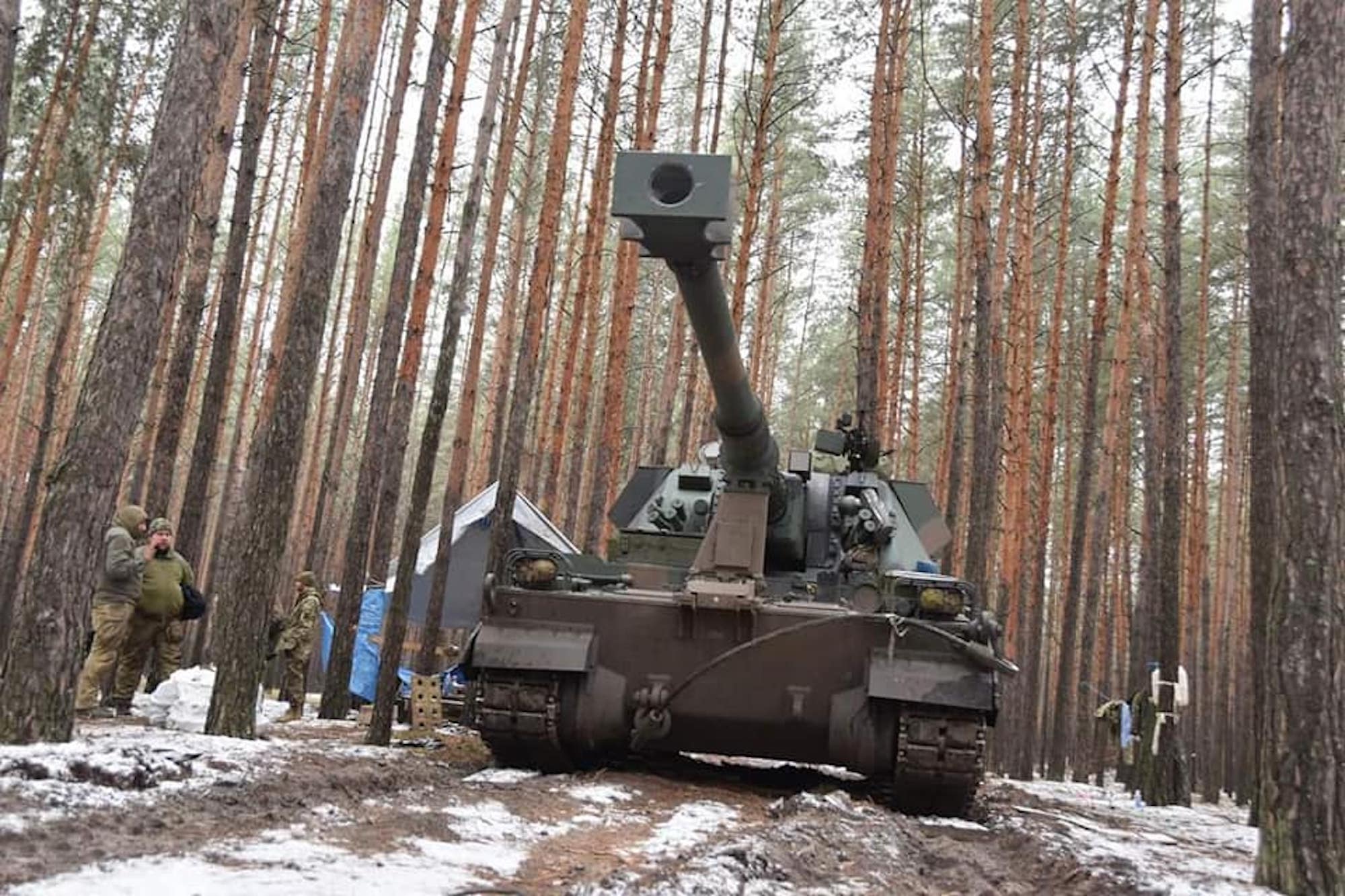
While it is highly unlikely that many countries will be placing artillery orders of the size that Poland has, it is now inescapable that self-propelled 155 mm artillery, whether based on a truck, wheeled armour or a tracked platform has, once again, been shown to be a critical operational capability for peer warfare. Unfortunately, following the defence capability build-down at the end of the Cold War, rebuilding such a capability remains a hostage to competing defence budgetary priorities.
David Saw






